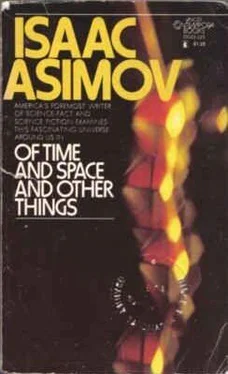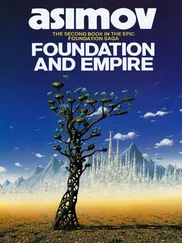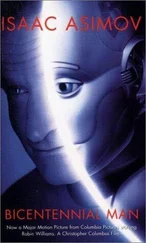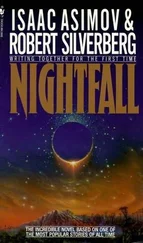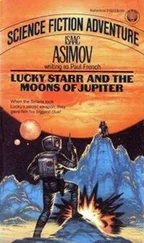Isaac Asimov - Of Time and Space and Other Things
Здесь есть возможность читать онлайн «Isaac Asimov - Of Time and Space and Other Things» весь текст электронной книги совершенно бесплатно (целиком полную версию без сокращений). В некоторых случаях можно слушать аудио, скачать через торрент в формате fb2 и присутствует краткое содержание. Год выпуска: 1972, ISBN: 1972, Издательство: Lancer Books, Жанр: Прочая научная литература, на английском языке. Описание произведения, (предисловие) а так же отзывы посетителей доступны на портале библиотеки ЛибКат.
- Название:Of Time and Space and Other Things
- Автор:
- Издательство:Lancer Books
- Жанр:
- Год:1972
- ISBN:ISBN: 0-447-33023-3
- Рейтинг книги:4 / 5. Голосов: 1
-
Избранное:Добавить в избранное
- Отзывы:
-
Ваша оценка:
- 80
- 1
- 2
- 3
- 4
- 5
Of Time and Space and Other Things: краткое содержание, описание и аннотация
Предлагаем к чтению аннотацию, описание, краткое содержание или предисловие (зависит от того, что написал сам автор книги «Of Time and Space and Other Things»). Если вы не нашли необходимую информацию о книге — напишите в комментариях, мы постараемся отыскать её.
Of Time and Space and Other Things — читать онлайн бесплатно полную книгу (весь текст) целиком
Ниже представлен текст книги, разбитый по страницам. Система сохранения места последней прочитанной страницы, позволяет с удобством читать онлайн бесплатно книгу «Of Time and Space and Other Things», без необходимости каждый раз заново искать на чём Вы остановились. Поставьте закладку, и сможете в любой момент перейти на страницу, на которой закончили чтение.
Интервал:
Закладка:
Here, though, a difficulty would creep in. What if there were no groups of ten, or perhaps no units, in a particular number? Consider the number "ten" or the number "one hundred and one." The former is made up of one group of ten and no units, while the latter is made up of one group of hundreds, no groups of tens, and ont unit. Using sym bols over the columns, the numbers could be written A and A A, but now you would not dare leave out the little sym bols. If you did, how could you differentiate A meaning "ten" from A meaning "one" or AA meaning "one hun dred and one" from AA meaning "eleven" or AA meaning "one hundred and ten"?
You might try to leave a gap so as to indicate "one hun dred and one" by A A. But then, in an age of hand-copy ing, how quickly would that become AA, or, for that mat ter, how quickly might AA become A A? Then, too, how would you indicate a gap at the end of a symbol? No, even if the Greeks thought of this system, they must obviously have come to the conclusion that the existence of gaps in numbers made this attempted simplification impractical.
They decided it was safer to let J stand for "ten" and SA for "one hundred and one" and to Hades with little sym bols.
What no Greek ever thought of-not even Archimedes himself-was that it wasn't absolutely necessary to work with gaps. One could fill the gap with a symbol by letting one stand for nothing-for "no groups." Suppose we use $ as such a symbol. Then, if "one hundred and one",is made up of one group of hundreds, no groups of tens, an one + - I unit, it can be written A$A. If we do that sort of thing, all gaps are eliminated and we don't need the little symbols on top. "One" becomes A, "ten" becomes A$, "one hun dred" becomes A$$, "one hundred and one" becomes A$A, "one hundred and ten" becomes AA$, and so on.
Any number, however large, can be written with the use of exactly nine letters plus a symbol for nothinc, Surely this is the simplest thing in the world-after you think of it.
Yet it took men about five thousand years, counting from the beginning of number symbols, to think of a sym bol for nothing. The man who succeeded (one of the most creative and original thinkers in history) is unknown. We know only that he was some Hindu who lived no later than the ninth century.
The Hindus called the symbol sunyo, meaning "empty."
This symbol for nothing was picked up by the Arabs, who termed it sifr, which in their language meant "empty." This has been distorted into our own words "cipher" and, by way of zefirum, into "zero."
Very slowly, the new svstem of numerals (called "Ara bic numerals" because the Europeans learned of them from the Arabs) reached the West and replaced the Roman sys tem.
Because the Arabic numerals came from lands which did not use the Roman alphabet, the shape of the numerals was nothing like the letters of the Roman alphabet and this was good, too. It rerroved word-number confusion and reduced gematria from the everyday occupation of anyone who could read, to a burdensome folly that only a few would wish to bother with.
The Arabic numerals as now used by us are, of course, 1, 2, 3, 4, 5, 6, 7, 8, 9, and the all-important 0. Such is our reliance on these numerals (which are internationally accepted) that we are not even aware of the extent to which we rely on them. For instance, if this chapter has seemed vaauely queer to you, perhaps it was because I had delib eratclv refrained from using Arz.bic numerals all through.
We ail know the great simplicity Arabic numerals have lent 'Lo arithmetical computation. The unnecessary load they took off the human mind, all because of the presence of t' e zero, is simply incalculable. Nor has this fact gone unnot.ccd in the Engl'sh language. Tle importance of the zero is reflected in the fact that when we work out an arithmetical computation we are (to use a term now slightly old-fashioned) "ciphering." And when we work out some code, we are "deciphering" it.
So if you look once more at the title of this chapter, you will see that I am not being cynical. I mean it literally.
Nothing counts! The symbol for nothing makes all the dif ference in the world.
13. C For Celeritas
If ever an equation has come into its own it is Ein stein's e = mc 2. Everyone can rattle it off now, from the highest to the lowest; from the rarefied intellectual height of the science-fiction reader, through nuclear physicists, college students, newspapers reporters, housewives, busboys, all the way down to congressmen.
Rattling it off is not, of course, the same as understand ing it; any more than a quick paternoster (from which, in cidentally, the word "patter" is derived) is necessarily evi dence of deep religious devotion.
So let's take a look at the equation. Each letter is the initial of a word representing the concept it stands for.
Thus, e is the initial letter of "energy" and m of "mass."
As for c, that is the speed of light in a vacuum, and if you ask why c, the answer is that it is the initial letter of celeri tas, the Latin word meaning "speed."
This is not all, however. For any equation to have mean ing in physics, there must be an understanding as to the units being used. It is meaningless to speak of a mass of 2.3, for instance. It is necessary to say 2.3 grams or 2.3 pounds or 2.3 tons; 2.3 alone is worthless.
Theoretically, one can choose whatever units are most convenient, but as a matter of convention, one system used in physics is to start with "grams" for mass, "centimeters" for distance, and "seconds" for time; and to build up, as far as possible, other units out of appropriate combinations of these three fundamental ones.
Therefore, the m in Einstein's equation is expressed in grams, abbreviated gm. The c represents a speed-that is, a distance traveled in a certain time. Using the fundamental units, this means the number of centimeters traveled in a certain number of seconds. The units of c are therefore centimeters per second, or cm/sec.
(Notice that the word "per" is represented by a fraction line. The reason for this is that to get a speed represented in lowest terms, that is, the number of centimeters traveled in one second, you must divide the number of centimeters traveled by the number of seconds of traveling. _If you travel 24 centimeters in 8 seconds, your speed is 24 centi meters - 8 seconds, or 3 cm/sec.)
But, to get back to our subject, c occurs as its square in the equation. If you multiply c by c, you get C2. It is, how ever, insufficient to multiply the numerical value of c by it self. You must also multiply the unit of c by itself.
A common example of this is in connection with meas urements of area. If you have a tract of land that is 60 feet by 60 feet, the area is not 60 x 60, or 3600 feet. It is 60 feet x 60 feet, or 3600 square feet.
Similarly, in dealing with C2, you must multiply cm/sec 'by cm/sec and end with the units CM2 /seC2 (which can be read as centimeters squared per seconds squared).
The next question is: What is the unit to be used for e?
Einstein's equation itself will tell us, if we remember to treat units as we treat any other algebraic symbols. Since e = mc 2, that means the unit of e can be obtained by mul tiplying the unit of m by the unit Of C2. Since the unit of m is gm and that of c2 is CM2 /seC2, the unit of e is gm x CM2/seC2. In algebra we represent a x b as ab; conse quently, we can run the multiplication sign out of the unit of e and make it simply gm CM2/SCC2 (which is read "gram centimeter squared per second squared).
As it happens, this is fine, because long before Einstein worked out his equation it had been decided that the unit of energy on the gram-centimeter-second basis had to be gm CM2 /seC2. I'll explain why this should be.
The unit of speed is, as I have said, cm/sec, but what happens when an object changes speed? Suppose that at a given instant, an object is traveling at 1 cm/sec, while a second later it is travelling at 2 cm/sec; and another second later it is traveling at 3 cm/sec. It is, in other words, "ac celeratin " (also from the Latin word celeritas).
Читать дальшеИнтервал:
Закладка:
Похожие книги на «Of Time and Space and Other Things»
Представляем Вашему вниманию похожие книги на «Of Time and Space and Other Things» списком для выбора. Мы отобрали схожую по названию и смыслу литературу в надежде предоставить читателям больше вариантов отыскать новые, интересные, ещё непрочитанные произведения.
Обсуждение, отзывы о книге «Of Time and Space and Other Things» и просто собственные мнения читателей. Оставьте ваши комментарии, напишите, что Вы думаете о произведении, его смысле или главных героях. Укажите что конкретно понравилось, а что нет, и почему Вы так считаете.
